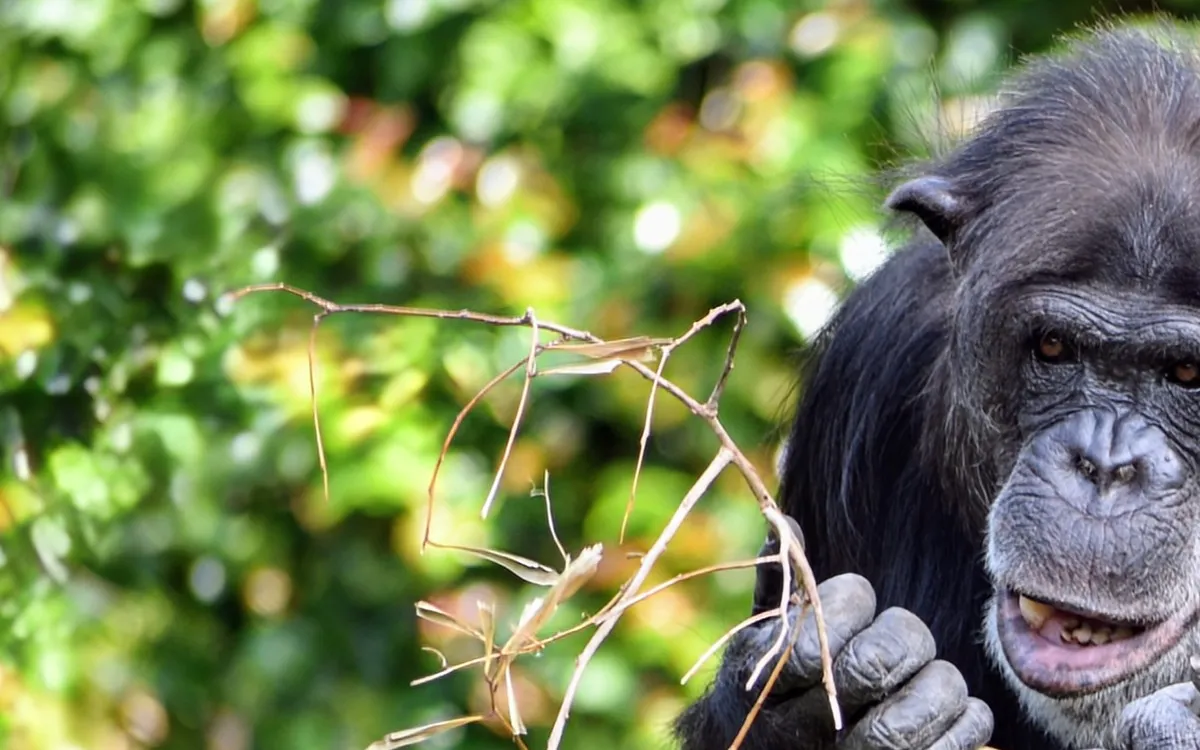
In the lush forests of Tanzania, chimpanzees have demonstrated remarkable intelligence through their ability to fish for termites using handmade tools crafted from local plant materials. This fascinating behavior highlights not only their ingenuity but also their thoughtful selection process when it comes to choosing the right materials for their tools. Recent research reveals that these primates are not merely picking any nearby stick; instead, they are making informed choices based on the flexibility and effectiveness of the materials available.
This groundbreaking discovery is the result of a collaborative effort among esteemed researchers from several institutions, including the University of Oxford’s School of Anthropology, the Max Planck Institute for Evolutionary Anthropology, the Jane Goodall Institute in Tanzania, the University of Algarve, the University of Porto in Portugal, and the University of Leipzig. Their study sheds light on the technical thinking involved in chimpanzee tool use, which has been a largely overlooked aspect of primate evolutionary history.
To successfully consume termites, chimpanzees must first extract them from their nests. They employ thin plant probes to carefully navigate and pull the insects from the narrow, twisting tunnels within termite mounds. The research team hypothesized that flexible tools would be more effective in these confined spaces compared to rigid sticks. To validate this hypothesis, lead author Alejandra Pascual-Garrido conducted experiments at Gombe Stream National Park, using a portable mechanical tester to measure the force required to bend various plant materials.
The results were compelling: the plants chosen by chimpanzees for tool-making were significantly more flexible than those they ignored, with unused plants being, on average, 175 percent more rigid. Even among plants growing in close proximity to termite mounds, the ones frequently utilized by the chimpanzees showed greater flexibility. Pascual-Garrido noted, “This is the first comprehensive evidence that wild chimpanzees select tool materials for termite fishing based on specific mechanical properties.”
Interestingly, the same plant species used by chimpanzees in Gombe, such as Grewia, are also employed by other chimpanzee populations located thousands of kilometers away. This widespread pattern suggests that the mechanical qualities of these plants have become common knowledge among different chimpanzee groups, hinting at a cultural transmission of knowledge. Their choices indicate a natural logic, suggesting that chimpanzees possess what scientists refer to as “folk physics”—an intuitive understanding of which materials will be most effective for their tasks.
The implications of this research raise intriguing questions about the cognitive processes behind chimpanzee tool-making. How do young chimpanzees learn to select the appropriate materials? Do they imitate their mothers? Furthermore, can they apply the same principles when choosing tools for other tasks, such as collecting ants or honey? Adam van Casteren from the Department of Human Origins at the Max Planck Institute emphasized, “This finding has important implications for understanding how humans might have evolved their remarkable tool-using abilities.”
Understanding how chimpanzees refine their techniques over time could provide insights into primitive forms of trial-and-error learning that resemble early human problem-solving. By examining chimpanzee preferences for specific materials, researchers hope to uncover clues about how early humans may have begun crafting tools long before stone implements appeared in the archaeological record. This research represents a small yet significant step toward unraveling the roots of human intelligence, viewed through the lens of our closest living relatives.
The full study can be found published in the journal iScience, offering a comprehensive examination of chimpanzee tool use and the cognitive abilities involved.
—–
Like what you read? Subscribe to our newsletter for engaging articles, exclusive content, and the latest updates. Check us out on EarthSnap, a free app brought to you by Eric Ralls and Earth.com.
—–